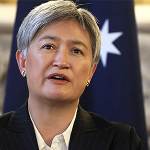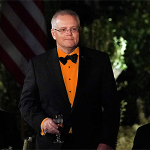As we approach the end of 2024, Australians have little reason to feel optimistic. Living standards have fallen, the currency is weakening, and the pressure of the rising cost of living continues to stretch households thin. The housing market remains a distant dream for many, and a pervasive sense of losing touch with our core values – especially in the troubling rise of antisemitism – has left us questioning where we’re headed.
But for me, the greatest disappointment this year has been the government’s environmental record. While the world has accelerated its push for green energy solutions, Australia has faltered, prioritising short-term political wins over long-term sustainable change.
Instead of exploring a range of strategies to lower emissions, Australia is placing all its bets on a cherry-picked basket of renewable technologies, primarily intermittent solar and wind. This narrow focus excludes proven global solutions that could be part of a comprehensive, pragmatic approach to decarbonisation. Most of all, this plan is starting to hurt Australia’s nature, biodiversity, and way of life.
For example, large-scale developments in North Queensland that are endangering forests and biodiversity are being overlooked. Stephen Nowakowski, an environmental researcher, maps existing and proposed wind farm projects, exposing their encroachment on critical forest ecosystems and the risks to wildlife, yet it’s a conversation the government has largely ignored.
The government has also paid little attention to some crucial energy solutions, such as behind-the-meter solar for industrial and commercial scales, which could significantly diminish the need for large-scale distribution infrastructure. Such solutions should be part of a more balanced energy approach, yet they remain underdeveloped and underfunded, leaving us reliant on costly, expansive projects that harm both the environment and our wallets. Professor Bruce Mountain’s study on behind-the-meter solar offers a comprehensive view of how such solutions can benefit Australia, a piece of work that should be integrated into our energy policy.
Equally concerning is the government’s reluctance to even consider carbon capture, usage, and storage (CCUS) technologies – solutions that countries like Norway are employing to reduce emissions, and other countries like the US and Canada already benefit from. This technology can reduce emissions from hard-to-abate industries, yet it remains ignored in the Australian conversation.
But the biggest mistake by this government is its refusal to address the critical issue of lifting the nuclear ban despite the urgent need to replace coal and gas. When the Coalition, supported by extensive due diligence with international organisations and experts, advocated for a public debate on nuclear energy, the government made every effort to silence the conversation. They not only vilified the discussion but also collaborated with vested interest groups and left-leaning media outlets to suppress it entirely. Despite public support and evidence presented in the recent Frontier Economics report, which highlights the necessity of combining renewables and nuclear to phase out coal and gas, the government has persistently refused to engage with the critical issue of lifting the nuclear ban.
In the face of all this, the government has been quietly extending the life of coal-powered stations behind the scenes in a desperate attempt to make up for its policy shortcomings. While the world moves toward a cleaner, more sustainable energy future, Australia continues to prop up a dirty industry, ignoring the potential of nuclear energy to replace coal with a clean, reliable baseload power source. The government’s refusal to engage with nuclear means they are sticking with a decaying, polluting industry far longer than necessary. Their assertion that nuclear energy will arrive too late is fundamentally flawed. As the lifespan of coal-powered stations is extended, it will align with the timeframe required to develop nuclear energy. This delay risks further entrenching our dependence on coal, making the transition to a clean energy future even more difficult.
In a world increasingly focused on decarbonisation, Australia’s refusal to consider nuclear is nothing short of a failure – one we will likely regret for generations to come. In contrast, nations across the globe, from the US to Canada, the UK, and Europe, are embracing nuclear to achieve their ambitious climate goals. The US, Finland, and Sweden’s support for nuclear underscores a growing consensus about its role in decarbonisation, and Sweden’s Energy Minister’s criticism of Germany for its nuclear phase-out shows that even European nations are reconsidering their approach.
We should not follow the path of Germany, which has already shown the consequences of phasing out nuclear energy too quickly. Germany’s decision to shut down its nuclear plants has led to higher emissions, energy costs, and increased reliance on fossil fuels, demonstrating the risks of ideological purity in energy policy. Australia cannot afford to make the same mistake – turning its back on nuclear energy when it is one of the most promising tools we have to meet our climate and energy goals.
And the current government’s failure to consider the environmental costs of its energy plan is baffling. If I were a Green or Teal MP, I would be demanding the government take a serious look at the environmental impacts of its decisions. Instead, we see a selective approach to supporting renewable energy projects – projects that, in many cases, are placed in unsuitable locations simply to appease the misguided quest for 100 per cent renewable energy.
Amidst the challenges, one of the silver linings has been the strong international support we’ve received. Through the environmental charity I lead, Coalition for Conservation, I’ve had the privilege of connecting with experts, policymakers, and think tanks at the past four United Nations Conference of the Parties (COP) and various global conferences. Many of these international voices are astounded that Australia, with its vast uranium reserves, continues to shut itself out of the nuclear energy conversation. Experts from the US, UK, UAE, Europe, Asia, and Canada are unanimous in their belief that nuclear energy is essential for achieving global decarbonisation goals and reaching Net Zero by 2050. My engagement with them has not only strengthened my conviction but also led me to embrace nuclear energy as a crucial part of the solution.
Despite facing significant opposition and even persecution in Australia for championing this cause, I remain strong in my belief that supporting nuclear is about more than just energy – it’s about safeguarding the future of our environment and our planet.
As Australians, we will look back on this year as one where we let an opportunity slip through our fingers. Of all the mistakes this government has made, excluding nuclear from the energy plan will be the one we cannot afford to forgive. Future generations – those who care about our environment, our economy, and our global standing – will hold us accountable for this failure.
As the holiday season approaches, my wish is simple yet hopeful: that we rise above self-interest and ideological divides to see that the future is already upon us. It’s time for Australia to lead with vision, embrace the technologies that will safeguard our future, and take a bold stand in the global fight against climate change. We don’t need to tear down what we’ve built to protect it. A balanced, mixed energy system will deliver the best outcomes for our people, economy, and environment.









